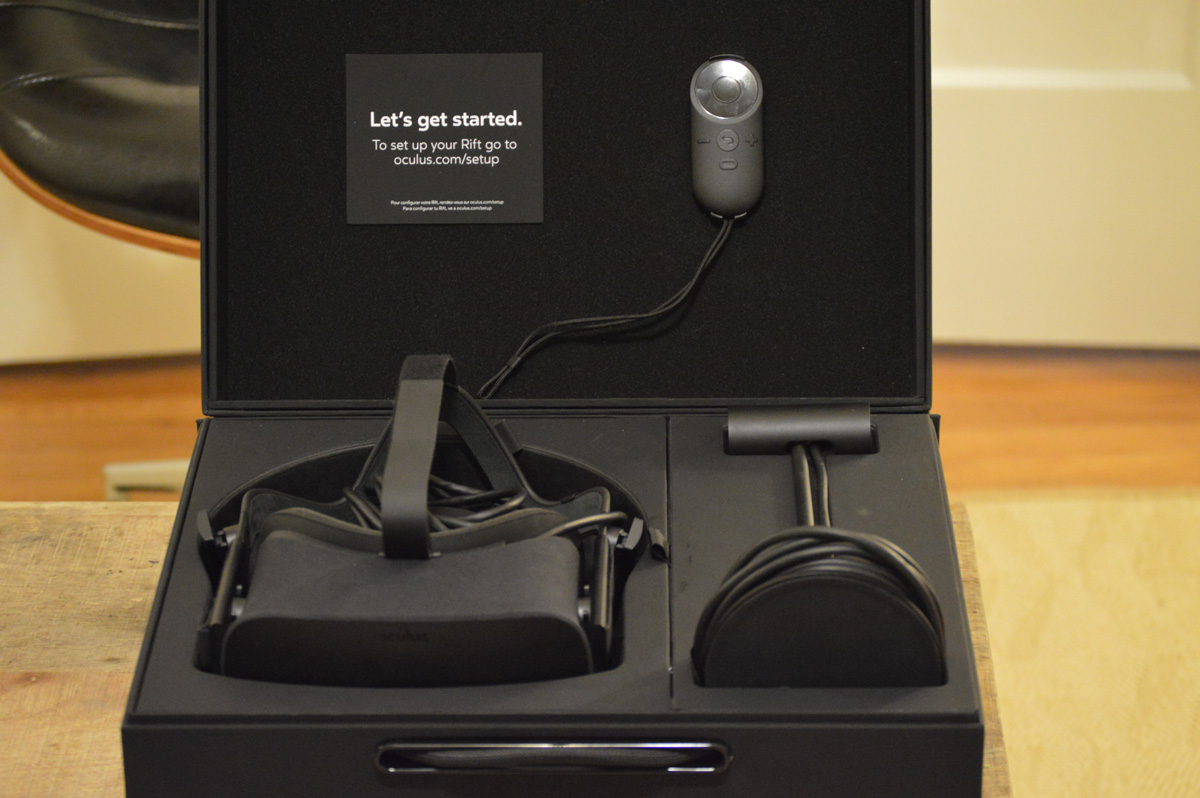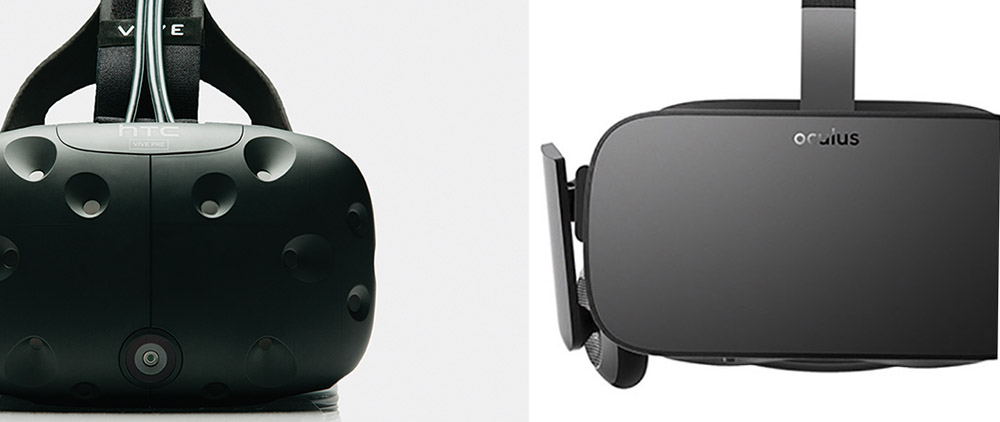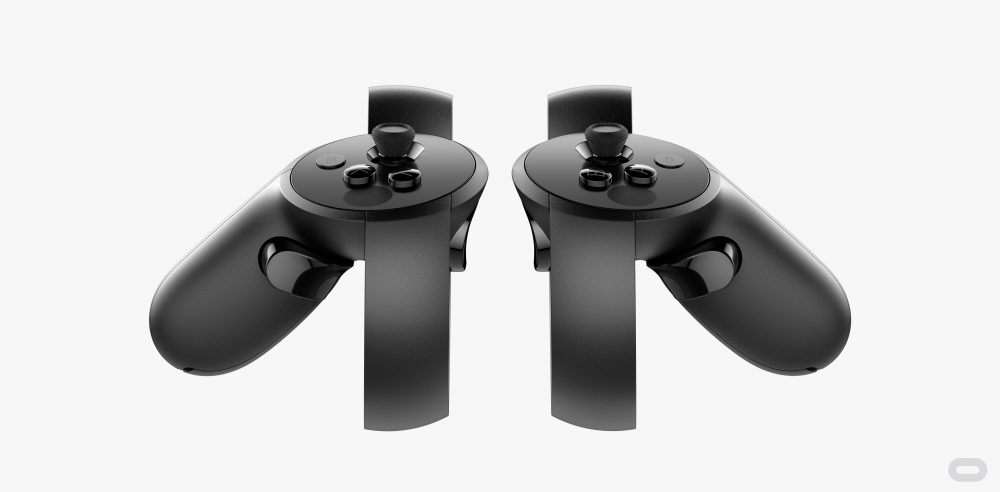Imagine if you could make the ‘Honest Trailer’ for the Oculus Rift’s Kickstarter campaign with the last four years of hindsight. You’d interject Palmer Luckey’s stubbornly optimistic comments about the future of VR with sarcastic quips about how long it would take to arrive, maybe laugh through the original endorsements from Valve in a pre-Vive era, and scoff at the request for cash knowing a $2 billion Facebook acquisition was just a few years away.
But what would you say about the Rift’s first year on the market?
It’s difficult to know where to begin. From mid-2012 to early 2014, Oculus seemed like the only real player in the industry. But in 2016 it’s faced stiff competition as it’s struggled to make its Rift, an excellent product in its own right, stand apart from the feature-complete-at-launch HTC Vive. There are a number of healthy positives to extract from Oculus’ 2016, but there are also a lot of struggles, some coming out of the blue, that have given the company more trouble than it would have liked.
Ball Parks And Back Orders
The year started off in a flurry of hype as Oculus kicked off CES 2016 with the news that pre-orders for the Rift would be going live later that week. People had a few days to get their schedules cleared and be ready to order as soon as possible, with price and shipping date being revealed at the same time. On the morning of January 6th 2016 we found out that the Rift would start shipping on March 28th, and would cost $599.
That startling price put Oculus on the back foot for what felt like the first of many times this year. People instantly rallied around past comments in which the company inferred the cost would be much lower than $599, the same price that infamously put Sony in hot water with its PlayStation 3 launch over a decade ago. Later in the day Luckey would make his first apology of the year after previously suggesting the device would be around (but still more expensive than) the $350 price point of the DK2.
A lot of Oculus’ good will moves (giving away Lucky’s Tale for free and EVE: Valkyrie to all pre-orders, free Rifts for Kickstarter backers) faded into irrelevancy very, very quickly.
Despite all that, stock sold out quick; back orders for the Rift queued all the way up to August over the next few days and Oculus tried to brush off complaints by claiming the headset was selling faster than it had anticipated. That news isn’t very useful without some hard sales stats, though, and even nearly a year later we’re still without any.
Out Of The Frying Pan…
Rift’s pricing would continue to face criticism leading up to launch, and Oculus’ troubles didn’t let up then. From a hardware and content perspective, the VR company delivered with a fantastic headset and massive launch line-up featuring gamepad-based games like Chronos [Review: 7/10], EVE: Valkyrie [Review: 9/10] and Lucky’s Tale [Review: 9/10]. It’s biggest problem? No one could seem to get one.
Even with the months of preparation for launch, Rift’s shipping was nothing short of a disaster. People that were at first guaranteed a unit on day one suddenly found their orders being pushed back, while others that knew they had a long month of waiting ahead found they’d still have to sit it out for extra two or three more months on top. The company didn’t make any friends bringing Rifts to Best Buy before its pre-orders were fulfilled, a move that had likely been agreed and signed long before these problems arose.
There was also the sting of releasing a gamepad-based headset when, a week later, the HTC Vive would also start shipping (along with a troubled launch of its own) with full room-scale user tracking, a feature that took Oculus another 8 months to catch up with. While Rift had fantastic content, it didn’t have experiences like Tilt Brush or Job Simulator, apps that brought you into virtual worlds deeper than ever before using position-tracked controls and room-scale technology.
The Battle Begins
That’s not to say the Rift paled in comparison to the Vive. Content curation has been one of the former’s strongest traits this year thanks to stricter regulations on Oculus Home than on Steam, where developers have quickly flocked to release a flood of apps in the latter case. Even with Vive’s more elaborate input methods, Oculus landed fantastic shooters like Damaged Core [Review: 9.5/10] and high-quality thrillers such as Edge of Nowhere [Review: 9/10] from developers like Insomniac Games.
But this has also been a big source of controversy for Oculus this year, and not all of it’s completely warranted. It’s entire approach to content has been widely panned by those that believe in open PC ecosystems. Some are angered by the exclusive content deals it’s secured, egged on by HTC and Valve’s exclusive-free stance (which will be put to the test with Vive Studios).
Others, including industry big shots like Epic Games CEO Tim Sweeney, were angered by Oculus pushing its Home ecosystem onto customers. Vive owners can’t get into Home without resorting to unofficial hacks, and Rift owners have to opt in to outside content to use Rift games and apps purchased on Steam. Balancing the realities of business with the ideals of a new industry has been one of Oculus’ biggest struggles this year, and it’s something the company is only just starting to get out ahead of.
At times, though, we’ve found ourselves asking when Oculus might catch itself a break from all these issues. Like when the Revive hack led to extra security measures that ironically opened Home up to piracy, or when the developer of Serious Sam VR stated that the company had offered it a “shitton of money” for timed exclusivity, fueling fires once more.
Really, when would Oculus catch a break?
Casualties Of War
It certainly wouldn’t happen on September 23rd. Just a few weeks before Oculus Connect 3, a bizarre and almost random report surfaced with supposedly on-record quotes from Luckey revealing that he had secretly funded a meme-based internet campaign in favor of now-President Elect, Donald Trump. After a day of anxiously waiting on news from Facebook, Luckey apologized for the second time this year.
Needless to say, this sent shockwaves throughout the industry, the effects of which are still being felt today. Luckey is, frankly, nowhere to be seen, having missed out on Oculus Connect 3 and been completely absent from both Twitter and Facebook. A once charismatic and influential icon for the industry vanished into thin air, though Oculus does promise that he’ll appear once more in the near future.
A Chance To Reconnect And Get Back In Touch
One of the ways Oculus has dealt with its problems this year has been to throw money at them. That was certainly evident at Oculus Connect 3, where the company brushed over its shipping woes and leader losses by talking about how much money it was spending on content and talent and the R&D work it was doing to prepare for the future.
We saw Mark Zuckerberg take up a significant chunk of the keynote conference revealing the future of Facebook and a standalone headset, while impressive new Studios titles showed that Oculus exclusives weren’t going anywhere. We got a final look at Oculus Touch before launch in December, and clarification that, yes, Rift would do room-scale pending that you were willing to pick up a third sensor along with your Touch controllers to accommodate it. There was also a lot of talk about diversity, perhaps to combat the criticisms launched at the company in the wake of the Luckey incident.
Oculus no doubt hopes that Connect can mark a turning point in the story so far. It gave an encouraging glimpse into its future that suggested the setbacks of 2016 weren’t going to slow it down, and that it was ready for what 2017 has to throw at it. Based on the last few months of the year, it does seem to be on the right path.
The launch of Oculus Touch could be seen as a shot at redemption, and Oculus seized that opportunity earlier this month. Touch launched at the expected price of $199, and it did so without any widespread shipping issues. More than 50 games were available at launch, many of which helped the Rift’s library catch up with Vive’s. Not to mention that the vast majority of Steam’s VR games work with Oculus Touch, even without official support.
Touch is a great device, and our favorite VR controller yet. It’s just what Rift needed heading into 2017. But it’s not the only interesting new direction Oculus is taking itself in next year.
Surprise Shake Up
More confusing was the most recent news that Oculus was splitting its work between PC and mobile teams, and CEO Brendan Iribe was stepping down as CEO to lead the PC team. The immediate changes aren’t obvious, but over the course of the next year and beyond we should see an Oculus that more clearly separates its work with the two areas of VR, not that there was much confusion between them in the first place.
We’ve started to wonder if we might be seeing the end of Oculus as a separate company from Facebook. The VR specialist plays a critical role in the future of the social network, and it’s feasible that Oculus becomes more a division of Mark Zuckerberg’s giant organisation than a subsidiary.
—
It’s clear Oculus has a lot to learn from its first year with the consumer Rift, but it’s also important not to forget that, at the center of all the many issues with the company, there was a great product. The Rift is a fantastic piece of hardware capable of amazing experiences, and as of this month its also capable of just about everything the Vive is.
2016 was a shaky start for the Oculus Rift, but it’s got every chance to gain ground in 2017.




































